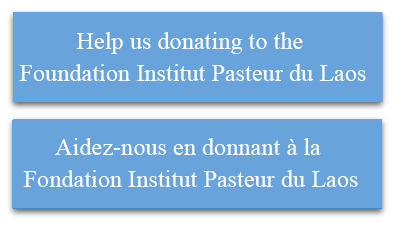Hepatitis B and C in Lao healthcare workers
Healthcare workers (HCW) are particularly at risk of HBV and HCV infection via bodily fluids due to percutaneous and mucocutaneous exposure. HBV is the most easily transmitted blood borne pathogen and an unvaccinated HCW has the risk of transmission from HBsAg positive needle stick injury of between 6-30%. The WHO estimate that every year in the Western Pacific Region B, which includes Lao PDR, 269,000 and 953,000 HCW are exposed to at least one percutaneous injury with a sharp contaminated with HCV and HBV, respectively. Approximately 41% and 36% of HCV and HBV infections of HCW are attributable to contaminated sharps in Western Pacific region B.
The Advisory Committee on Immunization Practices recommends vaccination of HCW in the United States with several vaccines including 3 doses of HBV. However, the vaccination or infectious status of HCW is often unknown. In Lao PDR, there is no nationwide vaccination schedule for HCW. There are no published data on the added risk of HCW to become infected by vaccine preventable diseases in Laos. Furthermore, lack of resources prevents adequate vaccination coverage and pre and post vaccination testing among HCW.
The LaoLux laboratory has investigated the HCV and HBV-specific serology in HCW in Vientiane and some provincial hospitals in Lao PDR. The prevalence of anti-HBc, anti-HBs, anti-HCV and HBsAg in HCW in different departments and settings with high risk (e.g. infectious disease units, dialysis units, surgery, obstetrics/gynaecology) will be determined. This will provide the basis for a public health strategy to better protect HCW against these and other infections.
Laboratory results obtained by the LaoLuxLab will be communicated back to the hospital/health care station/medical staff after completion of the analysis. .






